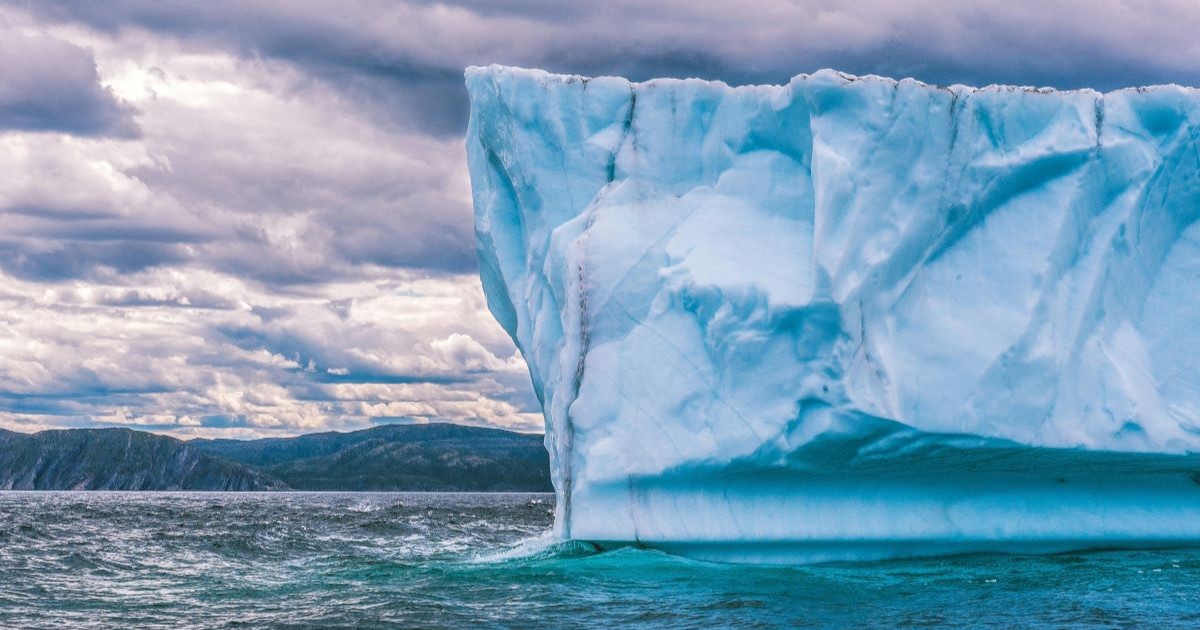
Pexels
When you think about the ramifications of the climate crisis in our polar regions, you’ll likely think about melting ice caps and the consequentially rising sea levels.
You might even think of sad-looking polar bears floating around on tiny icebergs in the Arctic, or confused penguins in Antarctica wondering why the land around them is getting so green.
What you likely won’t think about is a phenomenon known as ‘ice piracy’.
But according to researchers from the University of Leeds, this is happening more than ever.

Pexels
What is ice piracy? Well, counter to what you might think, this means a glacier that is stealing ice from its neighbors, a process that was thought to have taken between several hundred to thousands of years.
However the new research – which has been recently published in the journal The Cryosphere – uses satellite imagery to prove that in recent times, one massive glacier has been committing ice piracy on its neighbor over a span of just eighteen years.
Using data from satellites from the ESA, Japan Aerospace Exploration Agency, Canadian Space Agency and NASA, the team worked alongside researchers from the British Antarctic Survey and Northumbria University’s UK Centre for Polar Observation and Modelling to track ice velocity and thinning.
To understand exactly what is happening with Antarctic glaciers, the team observed the speed in which ice flows and how factors such as our increasing ocean and air temperatures, changing snow fall and ocean circulation are affecting it.

Selley et al/University of Leeds
The satellite data helped them to notice a huge increase in speed of seven Antarctic ice streams over the last two decades, with the streams running up to 81% faster in 2022 than in 2005, and an average increase of 51%.
However, unlike all it closest neighbors, the ice stream on Kohler West actually slowed down by 10%. Meanwhile its neighboring glaciers has significantly faster ice streams.
This discrepancy indicated ice piracy in action, as the study’s lead author Dr Heather Selley explained in a statement:
“We think that the observed slowdown on Kohler West Glacier is due to the redirection of ice flow towards its neighbour – Kohler East. This is due to the large change in Kohler West’s surface slope, likely caused by the vastly different thinning rates on its neighbouring glaciers.
Because Kohler East’s ice stream is flowing and thinning faster as it travels, it absorbs, or ‘steals’ ice from Kohler West. This is effectively an act of ‘ice piracy’, where ice flow is redirected from one glacier to another, and the accelerating glacier is essentially ‘thieving’ ice from its slowing neighbour.”
And these observations really are groundbreaking, showing just how significantly glacier behavior is changing in Antarctica during this period of climate crisis.

ESA
As Antarctica’s landscape changes in an unprecedented way, the new data is imperative to our understanding of not only climate change, but the glaciers that could pose one of our planet’s most detrimental tipping points. The revolutionary nature of this find is explained by Selley:
“We didn’t know ice streams could ‘steal’ ice from each over such a short period, so this is a fascinating discovery. It’s unprecedented as we’re seeing this from satellite data and it’s happening at a rate of under 18 years, whereas we’ve always thought it was this extremely long, slow process.”
This is leading to some significant change in the way in which our planet’s glaciers and ice sheets are structured and behave.
Fundamentally this could be problematic due to rising sea levels and their threat on not only human life, but human habitats too, with the potential for over 410 million people to be affected by rising sea levels by 2100.
And as we seek to protect our planet and prevent one of the tipping points from plunging our planet into climate catastrophe, understanding the ice is imperative.
If you thought that was interesting, you might like to read about a second giant hole has opened up on the sun’s surface. Here’s what it means.
Categories: SCI/TECH
Tags: · antarctica, climate change, climate crisis, environment, glaciers, ice, ice piracy, ice sheets, melting ice caps, melting ice sheets, rising sea levels, science, single topic, tipping point, top

